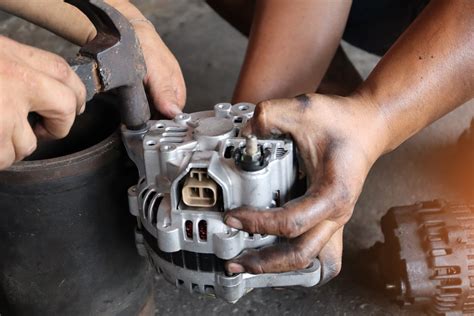An essential part of a car, truck, or SUV is the alternator, which recycles battery power while the vehicle is moving. It provides the electricity required for entertainment, engine control, climate, and other systems. The proper operation of the vehicle’s electrical system depends on the alternator operating at its best. Maintaining a functioning alternator is crucial because a failing one can cause difficulty, expensive repairs, or even a breakdown. Below are a few signs that show that your alternator is failing.
Dead battery
A dead battery in a car can indicate a failing alternator or battery, but it’s not always the case. When the alternator fails, the car’s electrical energy is insufficient, causing the battery to compensate. Car batteries are designed for short-term power, which drains the battery quickly. When the alternator isn’t functioning, it doesn’t provide regenerative charge, causing the battery to drain. If a dead battery is found, it’s recommended to check the alternator during battery replacement to avoid any issues. The battery gauge on the dash can also be used to assess the battery’s state. To diagnose the problem, jump start the car and remove the jump cables. If the alternator fails, the car will die again, while if the car continues to run, it’s likely the battery.
Warning Indicator light on dashboard

The first sign of alternator problems is frequently a warning indicator light known as “ALT” or “GEN” on the dashboard of most cars, or a symbol shaped like a battery. Computer systems that track the alternator’s voltage output are connected to this light. The light is activated and will turn off if the output goes over or below a predetermined threshold. The light may flicker during the initial stages of alternator issues as a result of abrupt fluctuations in the voltage output or increased power consumption. Ignoring the warning light may lead to a failure or costly repairs. It is advised to have your vehicle diagnosed in a garage because easy remedies may be available in the early stages of alternator failure.
Strange sounds
The alternator in your car is made up of several rotating elements that generate electricity. A grinding or whining sound could result from one of these components breaking or being worn out. In particular, this kind of noise has been reported to be caused by worn-out bearings inside the alternator. There will be a noise if the bushings on which the alternator is mounted are damaged. Typically, alternators are changed as a whole.
Dim Headlights

Headlights that flicker or are dim may be a sign of alternator failure since they get brighter as RPM rises and go dimmer as RPM falls. The alternator’s performance, near-failure, and vehicle programming all affect this symptom. In the event of alternator issues, modern automobiles are pre-programmed to prioritize electricity, which means that safety equipment like radios and heated seats may stop functioning before headlights dim. The alternator might be beyond repair if the headlights are fading. Perhaps the issue only arises when the vehicle uses more electricity.
Vehicle’s inability to start
When a car can’t start, it’s usually because the alternator isn’t working properly or the battery. The alternator is probably not working properly if the car is in good condition or has a fresh battery. If the automobile stalls a lot, it can mean that the alternator isn’t giving the coils and spark plugs enough power. To check for a battery or alternator problem, start the vehicle and let it die right away. This is typically an electrical failure. If you jumpstart the car and it still doesn’t start on its own, the battery is probably dead. By measuring the voltage between two points on a circuit with a voltmeter, electrical problems can be found.




